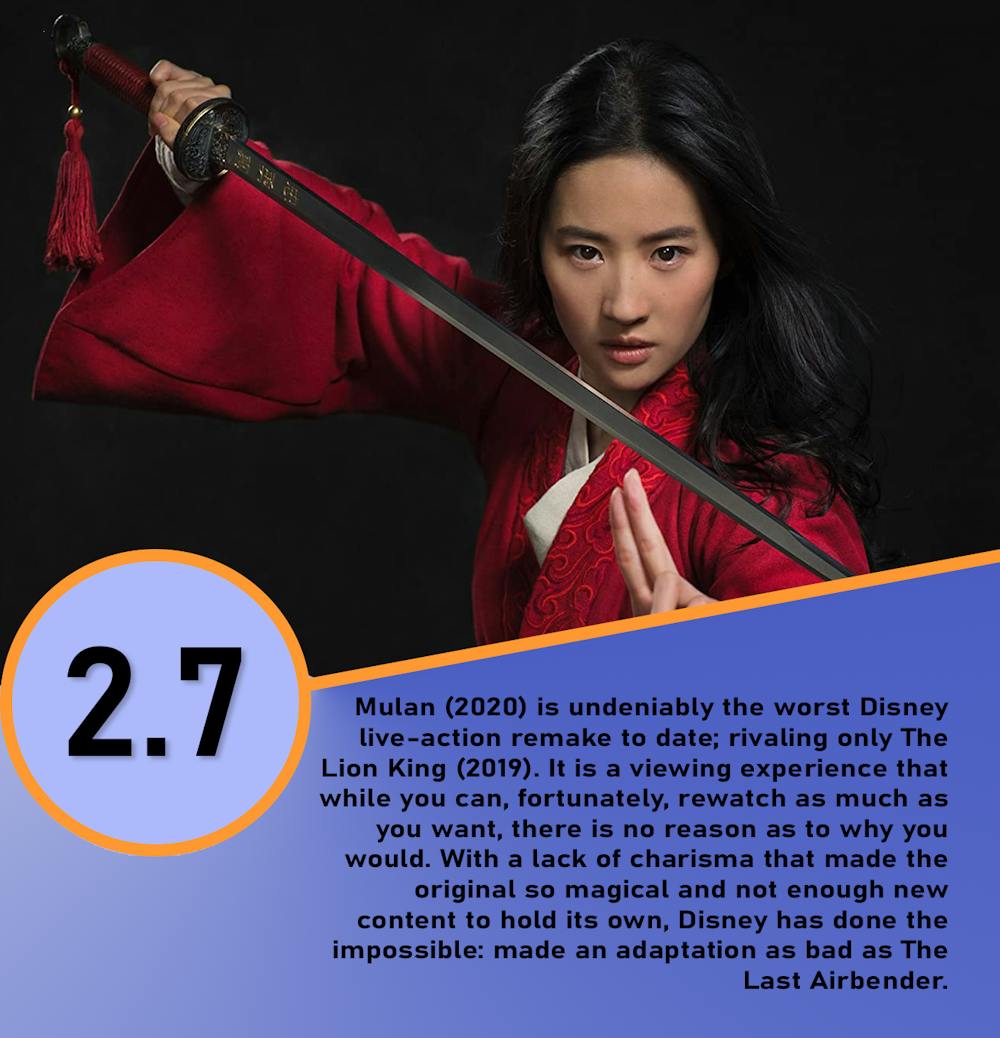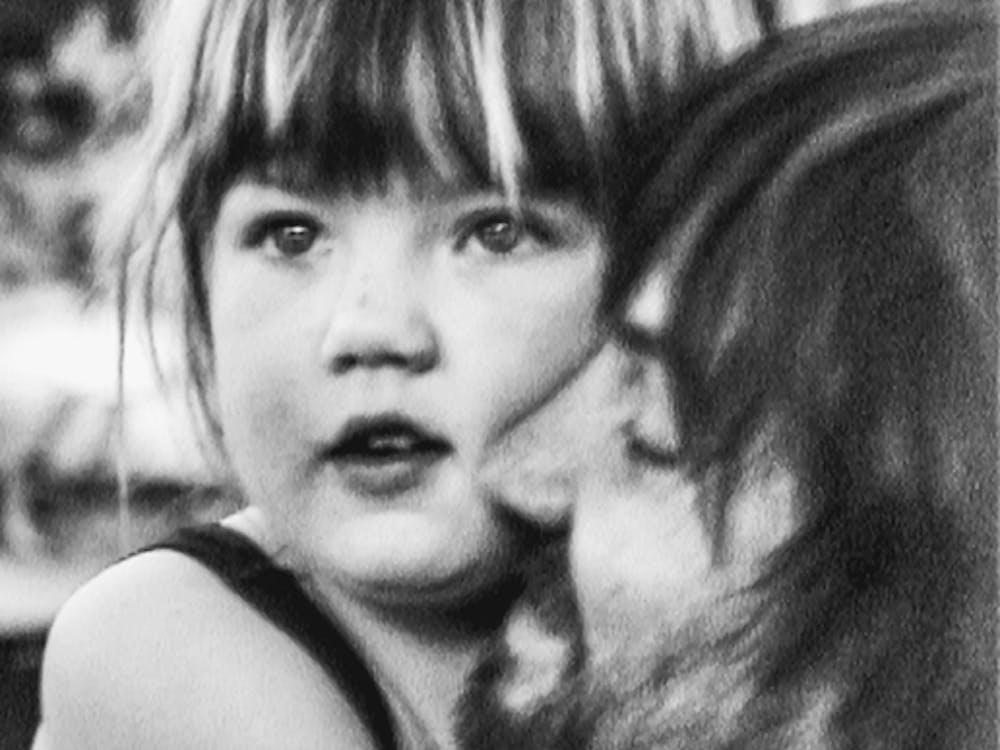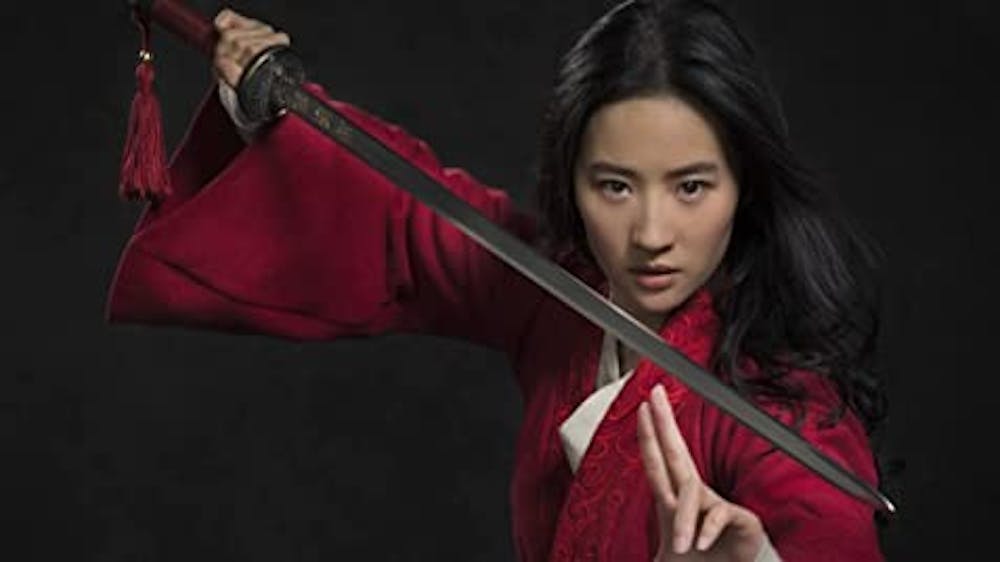“Representation” is a term that, at this point in entertainment history, has become a necessary luxury. The amount of effort studios put into researching how their films will resonate with a minority crowd has become exponential. The affirmation fans feel when seeing characters who match their race, gender or sexual orientation on the silver screen is worth more than any box office haul. However, a world such as that would not have been even a passing thought in Hollywood just 20 years ago. The technicolor world of animation is going through a similar realignment, albeit with a few decades head start thanks to films like Mulan.
Around the end of the last millennium, the Disney princess pantheon was lacking in terms of substantive female leads. While some offered a lot in terms of individuality, most of their narrative arcs ended the same way: whisked off their feet and saved by another generic prince whose personality rested on looks alone. That all changed when Mulan first released in 1998. Now young girls had an incredible fictional mentor that was loyal, brave, and proved that women could perform just as well or better than other men all on their own; a concept that would not be explored again until 2012’s Brave.
After close to 80 years of doing the classic animated fairytale schtick, Disney decided it was time to reinvent their beloved productions in live action. After a strong start with Cinderella (2015) the remake train has begun shuddering to an uncomfortable halt following the release of Aladdin (2019). Now the house of mouse has decided to take another go at the legend of Hua Mulan and her quest to save China, this time without the song and dance. However, if you thought that there was no way this remake cycle could get worse, then I regret to inform you that, much like 2020 itself, it can and will. At its worst, Mulan (2020) is an unintelligible excuse for an adaptation and a passable oriental action movie at its best.
You have brought disgrace to your ancestors
When it comes to what makes Mulan (2020) an incoherent mess in comparison to the original the devil is in the details. The 1998 animated film is renowned for many reasons: the spectacular set pieces, legendary songs, and the authenticity of the animation to name a few. What heightens it to the level of masterpiece though rests solely on our protagonist and her motivations.
Throughout the film, Mulan makes her decisions out of her own volition and justifies her honorable actions all on her own. Her challenging of the established norms of her time defining what it means to be a “good daughter/woman/wife” pushes the narrative forward. Her identity crisis concludes with a realization that she is not fighting for her father, her family, or even her country but for herself and the need to feel accepted through her own eyes. She is simply one of the most complex Disney princesses, and by extension Disney characters, ever. This is why it is so excruciatingly painful when the adaptation casts all that character development into the fire and replaces it with an incredibly hollow explanation for her actions.

Mulan is introduced in the new movie as a young prodigy warrior outcast because of her natural abilities gained through qi–a life force or energy that feels deadly similar to “the force” in Star Wars–which she is not permitted to use because of her sex. This new plot detail becomes more shallow and selfish throughout the film. Without being clumsy and unrefined in the beginning and then discovering battle strategy as a way to express herself, the core values of her character are lost from the moment she steps foot on screen. She becomes a leader among the other soldiers purely out of physical ability instead of balancing strength and discipline in stride. By over-explaining her skills and prowess, the screenwriters disregard and negate all the nuances that made her presence so unique in the first place. Additionally, all her successive chances to prove herself outside the male gaze are either stolen by other male characters or through lackadaisical narrative gymnastics.
Beyond that, there is very little that redeems Mulan in terms of adaptability. From the reexamination of personal biases among her male counterparts to the vibrancy of moments like the 4th battalion’s massacre, the mountain avalanche, and the award ceremony at the emperor’s palace, it is all heavily watered down and stale. It all becomes an even sicker joke when considering that the filmmakers sought to produce a “more grounded and more realistic” interpretation taking points from the original ballad and have Mulan wall run, flip around in the air like a Naruto character and fight a literal witch that can transform into a hawk.
A dishonorable lack of originality
It is impossible to make a memorable remake or adaptation without taking some creative liberties that make the production your own. Even with complete disregard for the acclaim or existence of the original animated feature, Mulan can not even meet the minimum level of ingenuity necessary to make a new take on this legend satisfactory. For one, the direction comes in at a level of disappointment on-par with every other aspect of the movie. Combat sequences, which should be the most visually spectacular of all scenes, come off nonsensically edited together with practical effects that only work 60% of the time. The more somber moments also lack a genuine amount of personality, and this extends directly into the almost uncanny acting.

Overall, the portrayal of every character in this film is hit or miss; an infuriating factor that extends from lead Liu Yifei’s depiction as the title character to each new or old sidekick. It would be an understatement to say that most of Mulan’s emotional dialogue and range is wooden. Instead of actually expressing herself on screen, Yifei’s interactions are done primarily through sharp inhales or sighs and she does not decide to show any real emotion until the last 10 minutes of the film. On the flip side, characters like Yao, Ling, and Po are incredibly over-expressive which actually makes sense considering they are given about as much dialogue as the cricket from the original.
The writing and pacing suffer from the same failures. The rourans’ motivations may be a little more complex than the Huns of the original, but they are drawn out to the point of abject boredom by the end of the first act. Speaking of the first act, all of the characters’ reactions to any of the important events such as Mulan deciding to leave or her father’s handicap feel ineffective without any narrative finality or weight. All of which is in stark contrast to the time spent at the training camp where all character development feels quick, boisterous, and brutish. While accurate, none of it is charming or funny; much like the rest of the movie. It all culminates in a third act that feels disjointed with scenes that happen for no reason, are double their necessary length, or feature action sequences that are ridiculously off the charts of reality.

While they are few and far between, there are some redeeming qualities about Mulan’s production value though. Xianniang, the shape-shifting witch fighting alongside the rourans, and her motivation to achieve freedom and expression beyond the influence of her handlers is a breath of fresh air. She and actress Li Gong are on the higher end of the ladder when it comes to writing and acting in Mulan, albeit a very easy ladder to ascend. Mulan’s love interest Honghui, played by Yoson An, is also in the same boat. His relationship with her starts from a much more believable place and it never feels forced or unnatural as it might have in the original with Li Shang.
No spirit, no charm, no fun
With all of that in mind, it is safe to say that Mulan (2020) is an all-around unenjoyable movie and that is where its greatest flaw lies. In their quest to make a more realistic interpretation of Hua Mulan’s legendary journey, director Niki Caro and her screenwriters have lost the tenacity, spirit, and charm that made the original survive in the hearts of millions of fans for decades, no matter if they are male or female.
With their latest entry in an already embarrassing cycle of live-action remake schlock, Disney has proven once and for all that the more you go for “historically accurate” the further you stray away from what made these fictional stories impressive in the first place. Mulan goes from being an enchanting journey through the middle kingdom with an equally enchanting heroine to nothing more than a sorry excuse for a documentary on ancient China.
This new adaptation has none of the individuality, spirit, or heart that made the original so fascinating to watch and revisit. It also has no idea what tone it is going for narratively and dances the line between taking itself too seriously and not taking itself seriously enough. After all is said and done, it is hard to decide which is more hilarious, the reaction Chinese audiences are having to the film or the possibility that in another timeline, I sat back in the theater with three friends and laughed as I watched this dumpster fire make a mockery of my favorite Disney princess. At least then I would have only paid 14 dollars instead of shelling out 30.

Featured Image: IMDb
Images: IMDb
Sources: IMDB, Collider, South China Morning Post



















